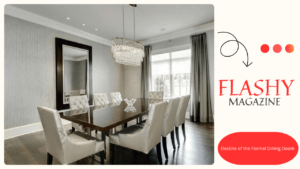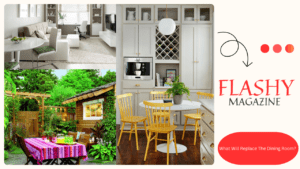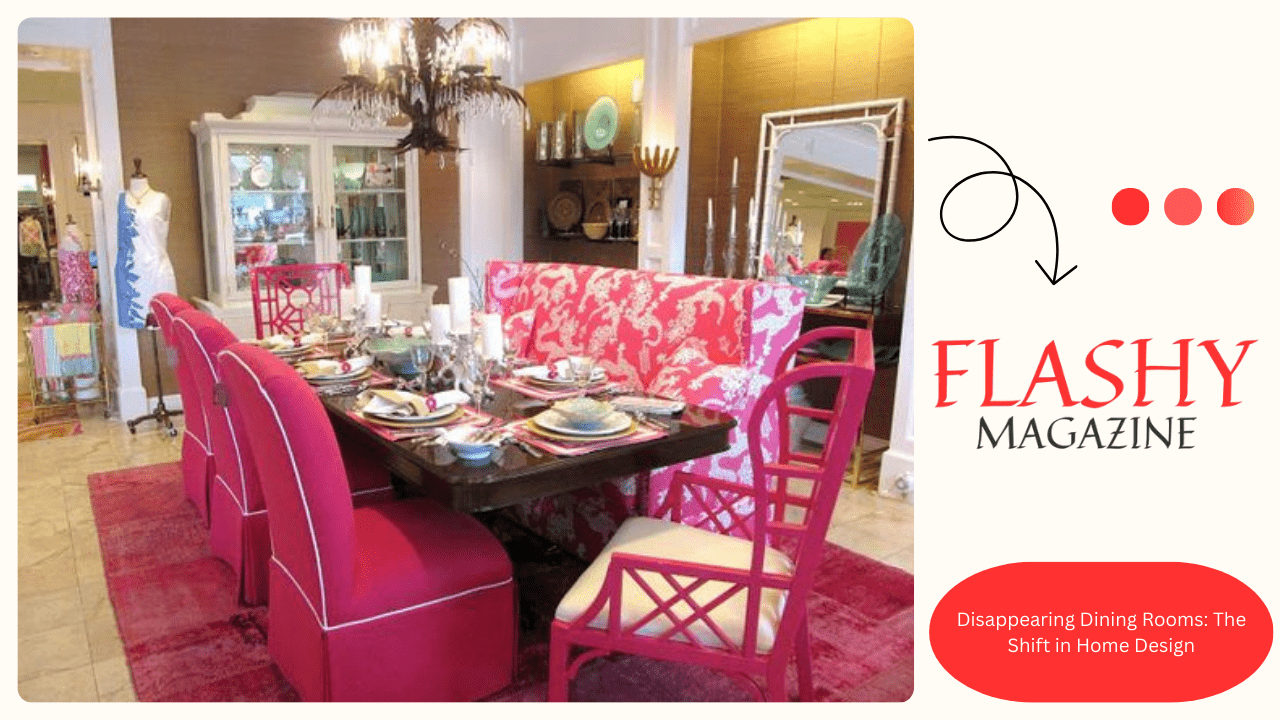disappearing dining rooms ! In recent times, the conception of disappearing dining rooms has gained traction as homeowners and contrivers move down from traditional, formal dining apartments. Once the focal point of numerous homes, the formal dining room is sluggishly getting a thing of the history, replaced by further flexible and informal spaces that suit ultramodern cultures. This trend reflects wider changes in how people live, entertain and use their homes.
In this blog post, we’ll explore why dining apartments are disappearing, what is replacing them, and how this shift is shaping the future of home design.
Decline of the Formal Dining Doom

Historically, dining apartments were designed as reserved spaces for family refection and special occasions. They were frequently elaborately decorated, with formal cabinetwork and surroundings that expressed fineness and tradition. Still, with the development of cultures, people’s station towards home design has also evolved. Then are some of the main reasons behind the disappearing dining rooms trend of cafeterias:
- Life Change
One of the main reasons dining apartments are getting less common is a shift in how people approach mealtime. Moment, families frequently have busier schedules and prefer a further informal dining terrain. The idea of sitting down to a formal mess every day is no longer practical for numerous, especially as dining habits come more casual and on the go. In numerous homes, people choose to eat in kitchen recesses, islets or indeed in the living room while watching television. This shift in the way refection are participated means that a formal dining space can feel spare or unused for important of the time.
- Open Living Conception
Another major factor is the rise of open- conception living, a popular design trend that emphasizes fluid, multi-functional spaces. In open- conception homes, the kitchen, living room, and dining room frequently combine into one cohesive space. Without walls separating these areas, a formal dining room becomes spare. The open conception offers inflexibility and allows homeowners to use the same space for multiple purposes. Rather of a bold dining room, numerous people conclude for larger kitchen islets or open dining areas that blend seamlessly into the living room, making the home feel more commodious and connected.
- Space Maximization
For homeowners looking to maximize space, a formal dining room can feel like a waste of space. In lower homes or civic surroundings where space is at a decoration, earmarking an entire room just for dining is considered hamstrung. As a result, numerous people are converting dining apartments into further practical spaces similar as home services, game apartments or guest apartments.
The rise of working from home has further fueled this trend. As further and further people need devoted workspaces, formal dining apartments are being converted into home services to meet the new demands of ultramodern life.
What Will Replace The Dining Room?

As dining room disappear, homeowners are redefining how they use their spaces and choosing druthers
that better suit their requirements. Then are some popular backups for the traditional dining room
- Multifunctional Spaces
Rather than having a single- purpose dining room, numerous people prefer multi-functional spaces that serve several requirements. This can include a combination of kitchen, dining and living areas where cuisine, eating and relaxing can take place in one open space. In these arrangements, the dining table may still be present, but it’s frequently used for further than just eating – it can serve as a place for schoolwork, a workspace or a place to entertain guests.
- Eating in the Kitchens
For those who still value the ritual of dining together, but don’t need a formal dining room, kitchenettes offer a practical volition. Kitchen islets with bar droppings or erected- in buffets produce a cozy space for informal dining while keeping the kitchen as the center of the home. This setup allows families to stay connected while preparing and enjoying reflections without the need for a separate dining area.
- Out-of-Door Dining
As further and further people invest in out-of-door living spaces, out-of-door dining spaces are getting a popular relief for formal dining apartments. Sundecks, quadrangles and out-of-door kitchens produce the perfect setting for dining during the warmer months, offering a relaxed and welcoming atmosphere for family and musketeers. Out-of-door dining areas can be as simple or elaborate as asked, with options ranging from small biota sets to complete out-of-door kitchens.
The Future of Canteens

Disappearing dining rooms may reflect changing cultures and preferences, but they have not fully failed out. Some homeowners still prefer the fineness and tradition of a formal dining area, especially for vacation feasts and special occasions. For others, the dining room serves as a flexible space that can acclimatize to different functions over time.
In new home designs, dining apartments are frequently refashioned to meet the requirements of ultramodern families. They can be lower, more protean or integrated into larger, open living spaces. Inflexibility is crucial – whether used for eating, working or entertaining, the dining space should reflect how the homeowners live and interact with their home.
Conclusion
The trend of disappearing dining rooms is a reflection of how home design is constantly evolving alongside ultramodern cultures. As people prefer inflexibility, functionality and informal living, the need for a formal dining room is fading. Still, for those who still value the tradition of a devoted dining space, there are plenitude of ways to revise and integrate it into the ultramodern home. Whether refashioned or refashioned, the dining room remains a protean space with the eventuality to acclimatize to changing requirements and preferences.








